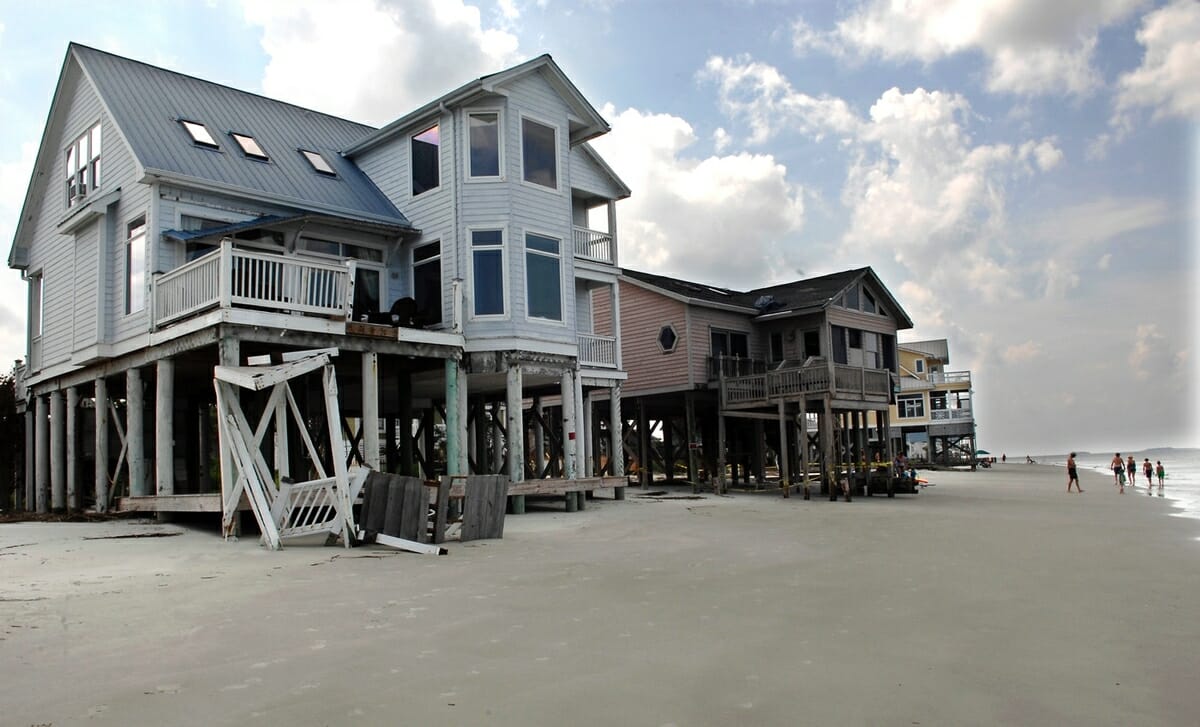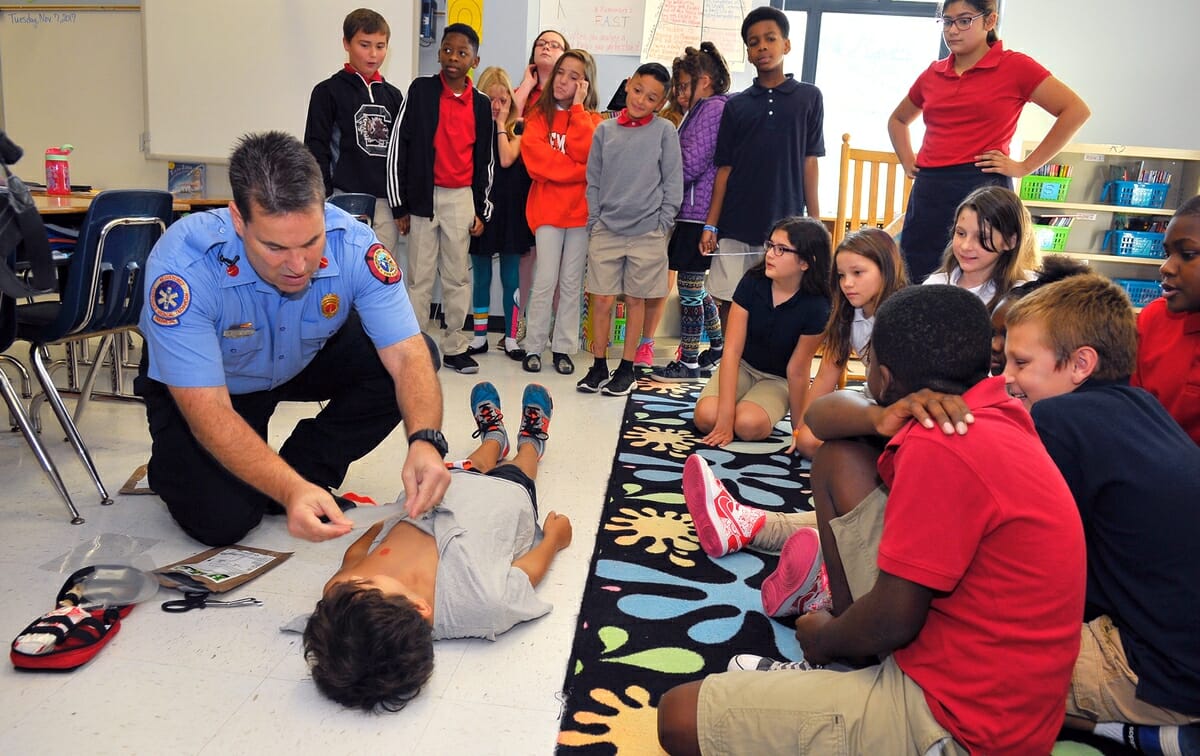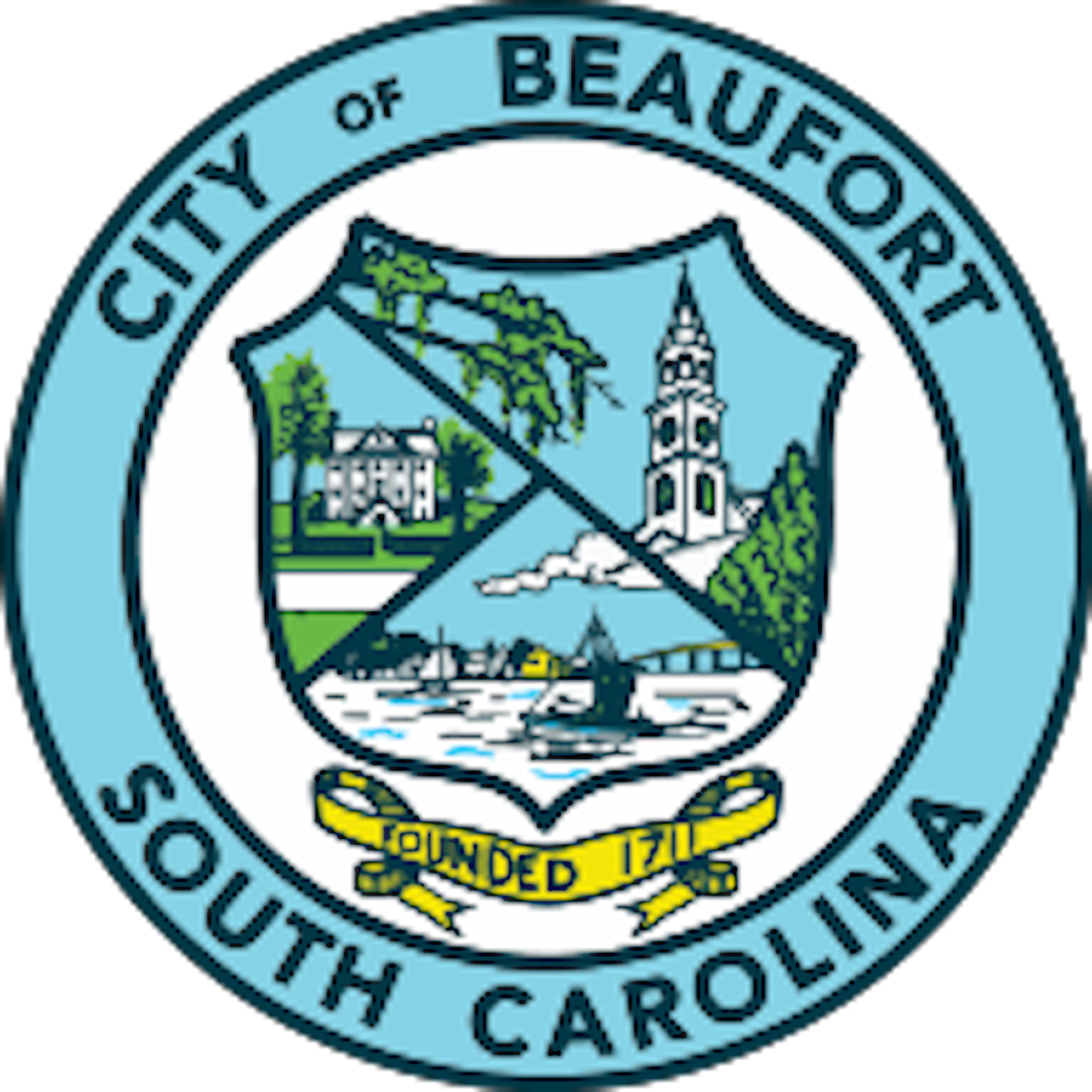Photo above: This beachfront home on Harbor Island was one of several that were severely damaged during Hurricane Matthew in October 2016. Photo by Bob Sofaly.
By Amy Rigard
The state of South Carolina is in the process of redrawing lines that restrict how close homes can be built to vulnerable beachfront shorelines and dune systems.
That process has caused some concern among beachfront homeowners, particularly those hit hard by recent hurricanes. They worry that the new lines could prevent them from rebuilding their homes.
However, in an effort to get more feedback, the state has extended the public comment period.
The final lines were originally scheduled to be announced Dec. 8. South Carolina residents now have until April 6, 2018, to submit public comments on the Department of Health and Environmental Control’s (DHEC) newly proposed beachfront jurisdictional lines.
DHEC will adopt final beachfront jurisdictional lines in May 2018 and will publish all final revised lines by Dec. 31, 2018.
In October, U.S. Rep. Mark Sanford, R-SC, echoed the concerns of many residents in a letter he sent to DHEC Director Myra Reece asking the department to delay the implementation of the new lines.
He noted that many Lowcountry residents were still dealing with the aftermath of Tropical Storm Irma and Hurricane Matthew and had a shortened comment period.
The statement read, “For regulations to be fair and meaningful, they must judiciously balance public and private interests. I don’t believe that the current roll-out of beachfront jurisdictional lines passes this test.
“In that regard, I join with many of my constituents in asking for a one-year delay in the implementation of these proposed lines.”
According to DHEC Director of Media Relations Tim Kelly, “Based on the feedback received during the original 30-day comment period, DHEC feels it is appropriate to give property owners and other interested parties more time to meet with department staff, understand the methodology used to set the jurisdictional lines and bring the department any additional information for consideration.”
The redrawing of beach jurisdictional lines restricts how close someone can build to vulnerable beachfront shorelines and the dune system and is required by the Beachfront Management Act of 1988.
DHEC establishes two lines – the baseline, or the more seaward line, and the setback line, the more landward line – to guide shoreline development.
The lines, which must be re-surveyed every seven to 10 years, are based on long-term erosion patterns along the shore.
Don Woelke, general manager at Harbor Island, hopes DHEC delays the implementation of those lines by one or two years.
He worries that the new lines could negatively impact property values, new construction and the repair of storm-damaged homes within the 1,400-acre gated community about 15 miles east of Beaufort.
The current proposed lines were surveyed before miles of beach were eroded by Hurricane Matthew and Tropical Storm Irma.
The public can view the proposed jurisdictional lines and reports that describe how they were established at each beach. Legislation passed unanimously in June 2016 locks in the baseline and prohibits it from ever moving seaward after Dec. 31, 2017.
According to DHEC, “The lines do not create a ‘no-build’ area.” Rather, repairs, reconstruction and new construction must meet specific conditions for exemption and must be authorized by the department. If exemptions or authorization aren’t granted, residents can take their case to a state court.
Comments can be submitted at gis.dhec.sc.gov/shoreline.
For more information, contact OCRM-comments@dhec.sc.gov.
Loans still available for Irma damages
Staff reports
The U.S. Small Business Administration is reminding homeowners, renters, businesses of all sizes and private nonprofit organizations that the deadline to submit disaster loan applications for damages caused by Tropical Storm Irma is Monday, Dec. 4.
Low-interest disaster loans are available in Beaufort and Jasper counties and the adjacent counties of Colleton and Hampton in South Carolina; and Chatham and Effingham in Georgia.
Businesses of any size and nonprofit organizations can borrow up to $2 million to repair or replace damaged or destroyed real estate, machinery and equipment, inventory and other business assets.
For small businesses, small agricultural cooperatives, small aquaculture businesses and private, nonprofit organizations, the SBA offers Economic Injury Disaster Loans (EIDLs) to help meet working capital needs caused by the disaster. EIDL assistance is available regardless of whether the business suffered any physical property damage.
Loans up to $200,000 are available to homeowners to repair or replace damaged or destroyed real estate. Homeowners and renters are eligible for loans up to $40,000 to repair or replace damaged or destroyed personal property.
Interest rates are as low as 3.305 percent for businesses, 2.5 percent for nonprofit organizations, and 1.75 percent for homeowners and renters with terms up to 30 years.
Loan amounts and terms are set by the SBA and are based on each applicant’s financial condition.
Applicants may be eligible for a loan amount increase up to 20 percent of their physical damages, as verified by the SBA for mitigation purposes. Eligible mitigation improvements may include a safe room or storm shelter to help protect property and occupants from future damage caused by a similar disaster.
Applicants can apply online using the Electronic Loan Application (ELA) via SBA’s secure website at disasterloan.sba.gov/ela.
Businesses and individuals can also get information and loan applications by calling the SBA’s Customer Service Center at 1-800-659-2955 or by emailing disastercustomerservice@sba.gov.
Loan applications can also be downloaded at www.sba.gov. Completed applications should be returned to the centers or mailed to: U.S. Small Business Administration, Processing and Disbursement Center, 14925 Kingsport Road, Fort Worth, TX 76155.









